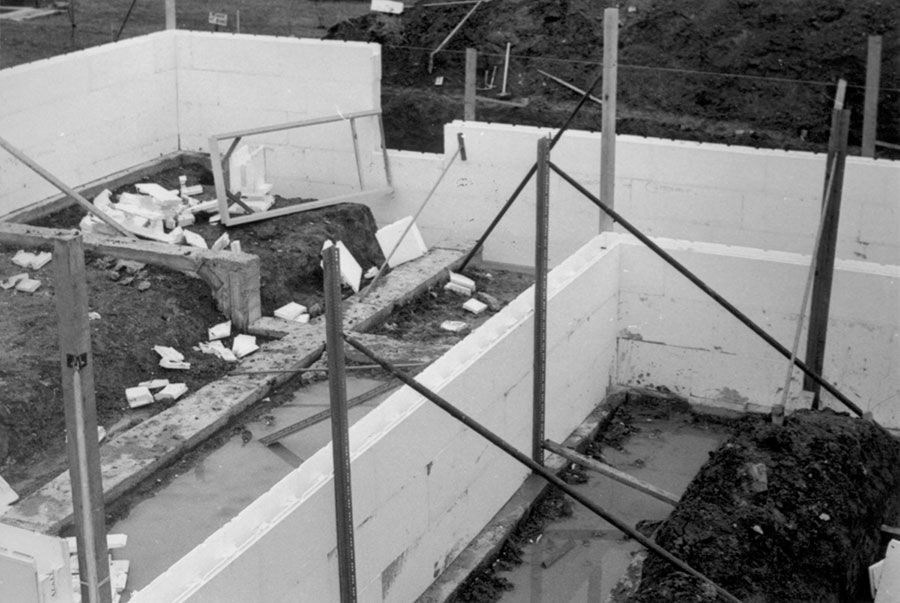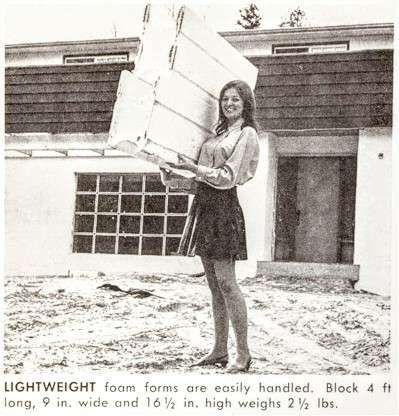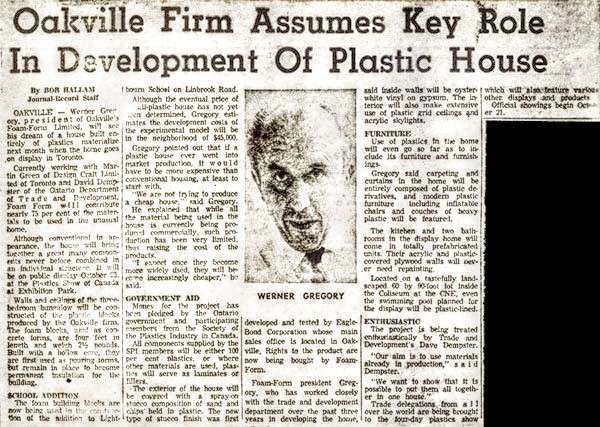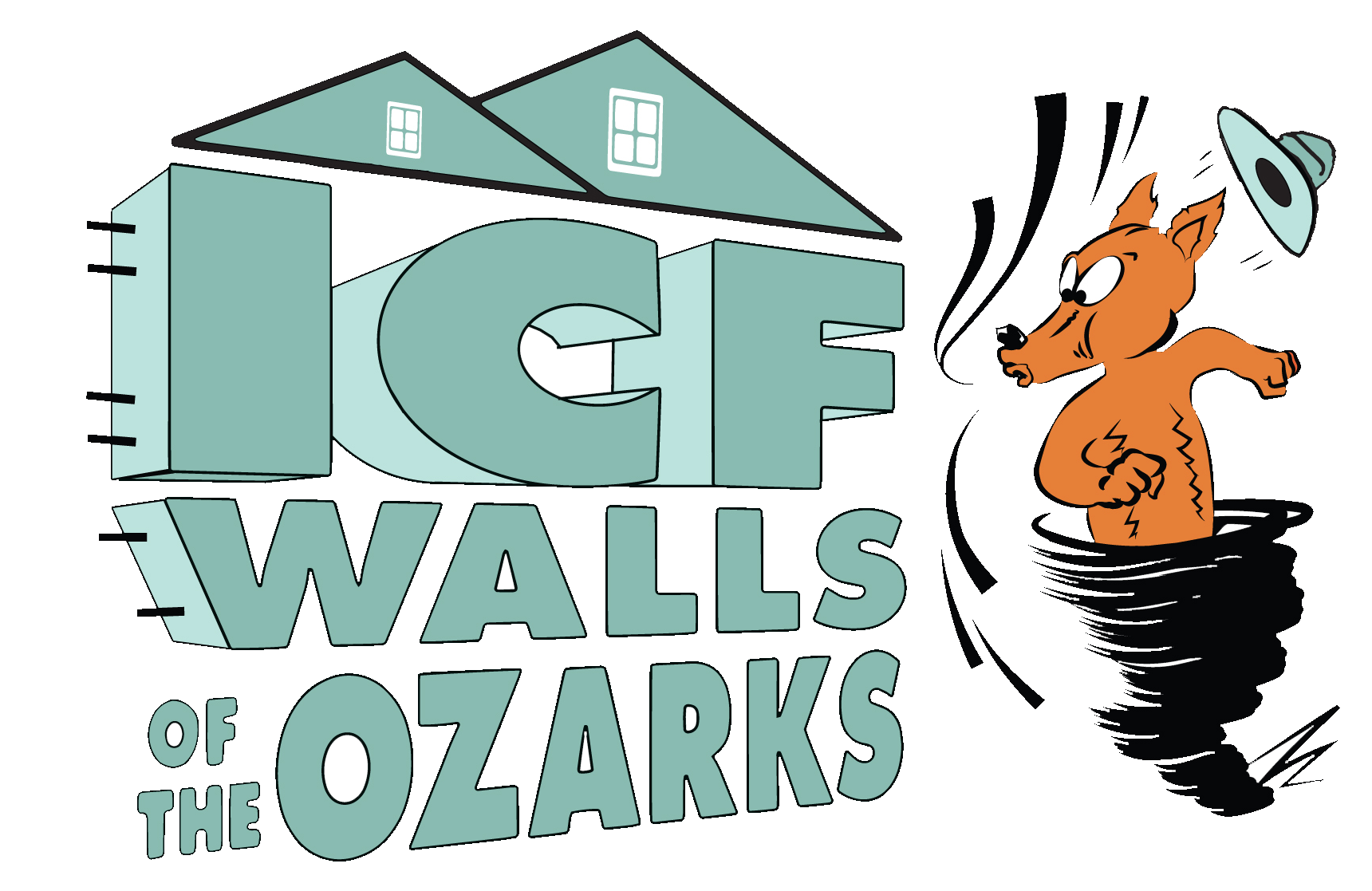Delve Into the Exciting History of Insulated Concrete Forms
The history of Insulated Concrete Form (ICF) construction may not be widely known, but it has a rich and fascinating past. Werner Gregori’s 1967 patent for ICF brought the construction to North America. However, the origins of this innovative building method trace back to Belgium in 1937. In this blog post, we’ll investigate the history of ICF construction, exploring its roots, development, and early adoption in different parts of the world.

The Birth of ICF: Durisol
The story of ICF begins in Belgium, where Swiss nationals August Schnell and Alex Bosshard introduced the first ICF system known as Durisol in 1937. Their invention was inspired by a Dutch patent from 1932, and initially, they made little impact on the construction industry. Durisol was a revolutionary product that combined raw wood fiber with Portland cement through a unique natural treatment process. This blend created a stay-in-place concrete wall formwork system, which was particularly valuable in post-war Europe when other resources were scarce, and traditional construction methods were not possible or cost-effective.
Durisol quickly expanded its reach into international markets, including the Netherlands and France, offering a quick and sturdy construction method that could be executed by largely unskilled labor. By 1959, Durisol was being produced in 13 countries, as reported in Barron’s National Business and Financial Weekly (vol. 39).
International Patents and the Arrival in North America
International patents for ICF technology followed, with Swiss and Canadian patents being registered in the late 1940s and early 1950s. However, it wasn’t until the 1960s that ICF construction officially reached North America. Werner Gregori is credited with this milestone. Inspired by watching his kids play on the beach and observing the effectiveness of his EPS foam cooler in keeping beverages cold, Gregori began to envision the potential of using EPS foam blocks for concrete formwork.
Gregori’s creation, known as “Foam Form,” featured 16-inch high by 48-inch long blocks with a tongue-and-groove interlock, metal ties, and a waffle-grid core. Remarkably, this design remained virtually unchanged for the next 15 years. Gregori submitted the patent for Foam Form in Canada on March 22, 1966, and the U.S. patent was granted on October 24, 1968. Gregori also traveled back to Germany, where he shared his ideas with BASF, a major chemical company that had invented EPS (expanded polystyrene). This collaboration contributed to the development and adoption of ICF construction in Germany. Subsequently, this contributed to the standard EPS-foam made ICF block we use today.

The Pioneering Projects of 1969
In 1969, several ICF homes and buildings were constructed in North America. Since these projects were constructed in the same year, it makes it difficult to say which is actually “the first ICF home”. These early projects were groundbreaking and laid the foundation for the widespread use of ICF construction.:
- Lakeshore Drive, Oakville, Ontario: An ICF home using Foam Form blocks was constructed for Patrick “Bud” Kelly, owner of Allied Construction. This marked the beginning of Bud Kelly’s involvement with Foam Form Canada Ltd, making Allied Construction one of North America’s first experienced ICF contractors.
- Sheboygan, Wisconsin: Dow Chemical completed a concrete-filled foam ICF building project in collaboration with the Bemis Company of Wisconsin.
- Linbrook Rd., Toronto: In 1969, multi-unit townhouse residential buildings and an addition to the St. Mildreds school on Linbrook Rd. in Toronto were constructed using Foam Form ICF blocks. Around this time, the design of the Foam Form ICF block evolved from a screen-grid to a waffle-grid with metal ties, striking a balance between cost-effectiveness and structural integrity for potential use in seismic zones.

The history of ICF construction is a tale of innovation, adaptation, and the pursuit of cost-effective, sustainable building methods. While Werner Gregori’s Foam Form patent in 1967 is often associated with the arrival of ICF construction in North America, the roots of this technology can be traced back to Belgium in 1937 with the creation of Durisol. These early pioneers paved the way for a construction method that would revolutionize the industry, offering energy efficiency, durability, and ease of construction. Today, ICF construction continues to evolve and gain popularity as a sustainable and resilient building solution.



